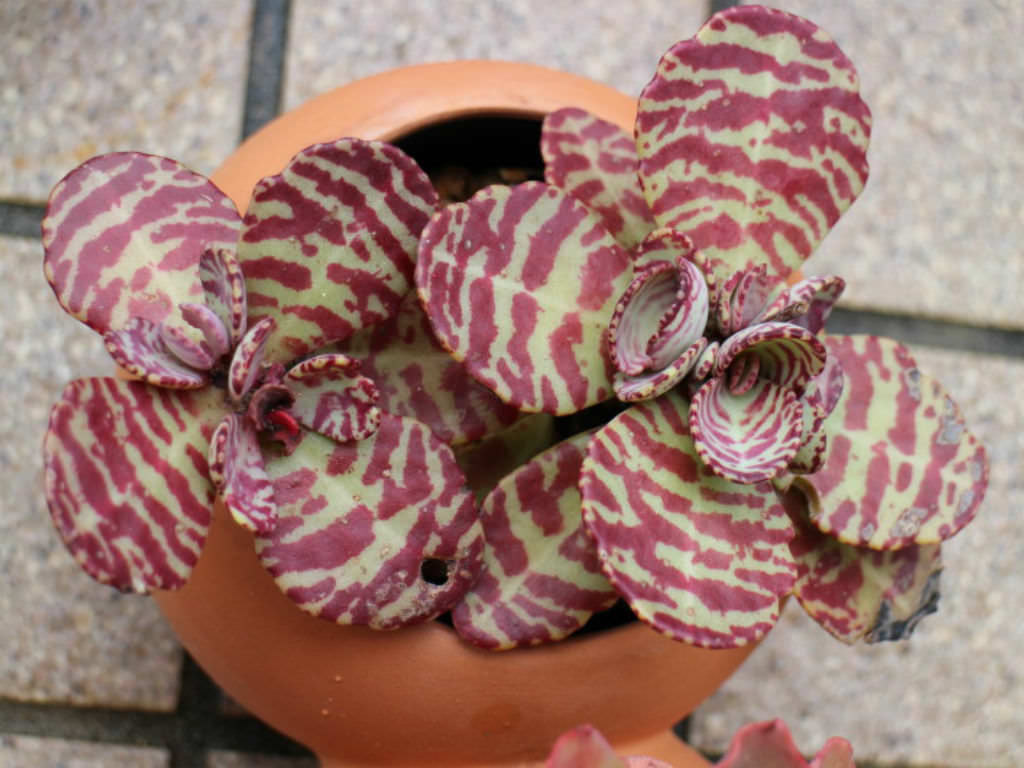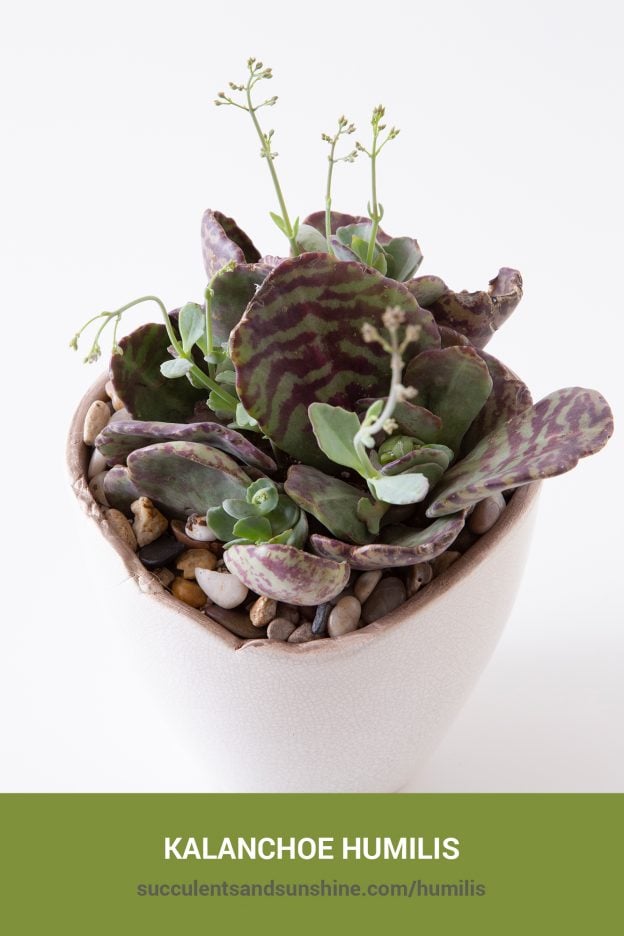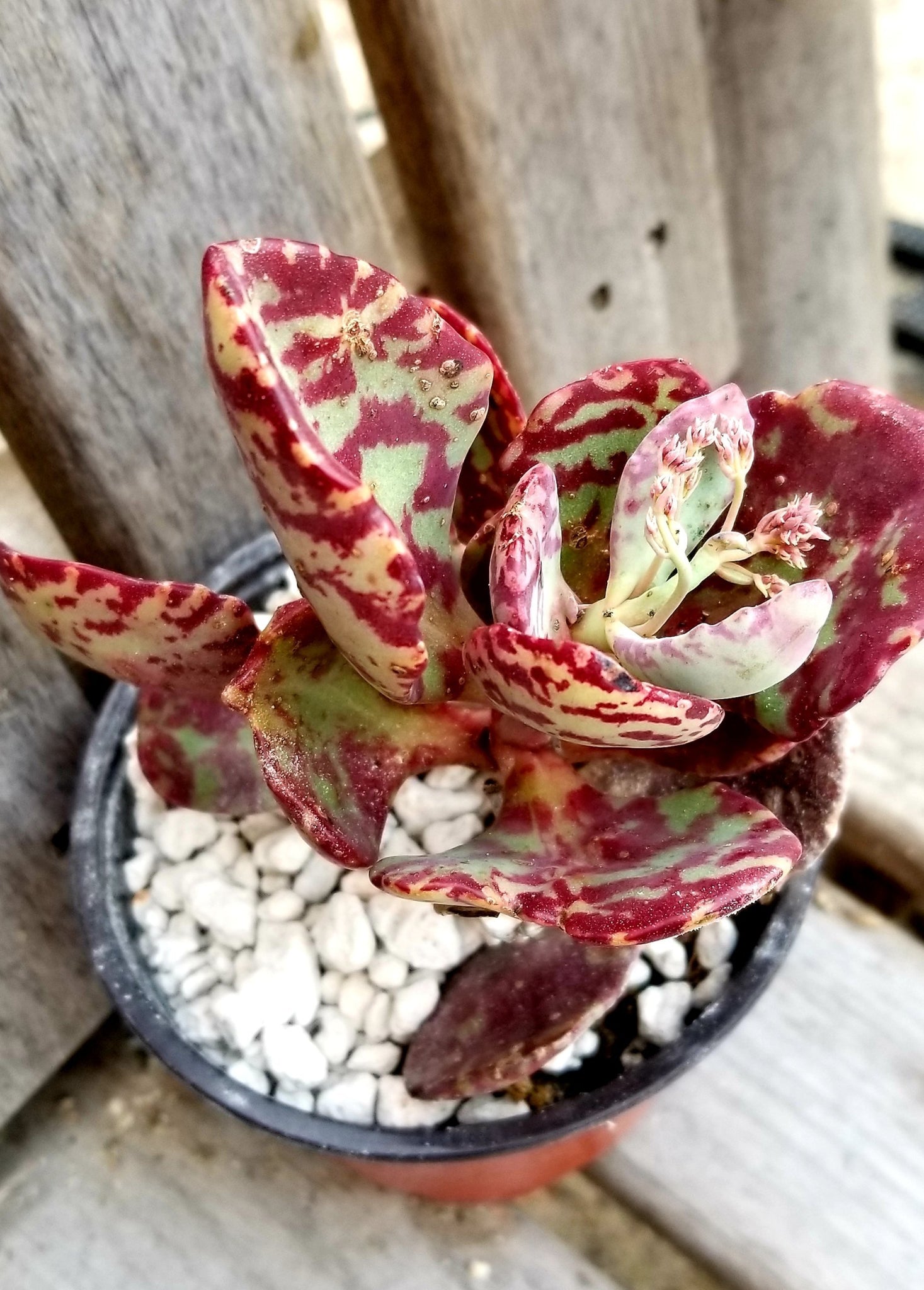This Kalanchoe is an impressive shrub-like succulent with variegated green leaves that have purple or maroon spots. To really show off its vibrant colors, it should be placed in full sun. During the summer, it will produce beautiful purple blooms.
Table of Contents
Care and Propagation Information
Kalanchoe humilis is a stunning, multi-colored succulent that is perfect for novice gardeners. It is great in rock gardens and planters, and the hummingbirds love its flowers.
Watering
Kalanchoe humilis, like most succulents, requires a “soak and dry” watering method. Make sure the soil has completely dried out between waterings.
Where to Plant
Kalanchoe humilis is not suitable for cold climates, so if you live in an area with temperatures lower than 10° F (-12.2° C), it’s recommended to grow it in a pot that you can bring inside when the weather gets cold. This plant prefers to be in a spot that gets either full or partial sun.
Put your plants in a spot that gets at least six hours of direct sunlight each day. If you are growing indoors, locate the plants close to a south-facing window or other area that gets a lot of sunshine.
How to Propagate Kalanchoe humilis
Kalanchoe humilis can be propagated with relative ease using stem cuttings, leaves, or seeds.
Cuttings
To propagate Kalanchoe humilis, use a clean, sharp knife or scissors to take a cutting from a stem just above a leaf. Let it dry for a few days and then put it in soil that drains easily.
Leaves
To propagate this succulent, carefully remove a leaf from the mother plant. Make sure to twist it off so that no part of the leaf remains attached to the stem, or else your chances of success will be reduced.
Let the leaf sit for a few days until the cut end seals up and then plant it in soil that drains well. Water the leaf only when the soil is totally dry.
Seeds
Care and Propagation Information
General Care for Kalanchoe humilis
Watering
Kalanchoe humilis, like most succulents, requires a “soak and dry” watering method. Make sure the soil has completely dried out between waterings.
Where to Plant
Kalanchoe humilis is not suitable for cold climates, so if you live in an area with temperatures lower than 10° F (-12.2° C), it’s recommended to grow it in a pot that you can bring inside when the weather gets cold. This plant prefers to be in a spot that gets either full or partial sun.
Put your plants in a spot that gets at least six hours of direct sunlight each day. If you are growing indoors, locate the plants close to a south-facing window or other area that gets a lot of sunshine.
How to Propagate Kalanchoe humilis
Kalanchoe humilis can be propagated with relative ease using stem cuttings, leaves, or seeds.
Cuttings
To propagate Kalanchoe humilis, use a clean, sharp knife or scissors to take a cutting from a stem just above a leaf. Let it dry for a few days and then put it in soil that drains easily.
Leaves
To propagate this succulent, carefully remove a leaf from the mother plant. Make sure to twist it off so that no part of the leaf remains attached to the stem, or else your chances of success will be reduced.
Let the leaf sit for a few days until the cut end seals up and then plant it in soil that drains well. Water the leaf only when the soil is totally dry.
Seeds
FAQ
How do you care for Kalanchoe humilis?
Keep them away from cold drafts and temperatures below 12 degrees Celsius.
In the summertime, give your plant enough water to keep the soil moist, but not soaking wet. On the other hand, during the winter, water it less frequently and let the soil dry out a bit between waterings. This will help your plant to thrive in the low humidity of typical winter households. Keep an eye on the fleshy leaves for any signs of distress caused by lack of water. When it comes to temperature, your plant will do best in warm environments and should be shielded from cold drafts and temperatures below 12 degrees Celsius.
Is kalanchoe humilis full sun?
Can kalanchoe survive full sun?
Kalanchoe thrives when placed in an area where it will get plenty of sunshine and planted in a potting medium that drains well. To ensure the plant is healthy, it should be kept in a space with ample bright light; however, too little light will cause the stems to stretch out. To avoid any damage that can be caused by overwatering, it is important to not saturate the soil.
How much light does kalanchoe humilis need?
of sleep is the recommended amount
It is suggested that adults get 6 hours of sleep per night.
Is kalanchoe humilis rare?
Kalanchoe Humilis is an uncommon succulent that takes the shape of a large shrub. Its green leaves are accompanied by purple or maroon splotches.



